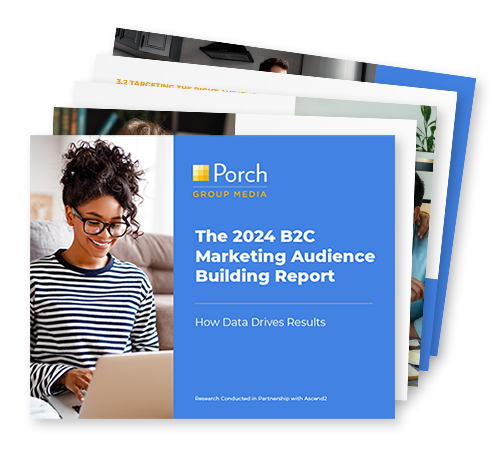Today, the relationship customers build with a company is far from linear.
They research and connect with companies across different devices and touchpoints. You must manage and automate engagement with consumers uniquely at every touch point, based on each individual’s behavior.
Engaging consumers effectively at key moments in their purchase journey is important for converting interest into sales and building long-term loyalty. This involves identifying and capitalizing on opportunities where a consumer’s interest is piqued, and their decision can be influenced.
7 Tips to Target Consumers Throughout Purchase Journey
Here’s are seven tips on how to effectively target consumers at these critical moments to maximize your marketing impact.
1. Understand the Consumer Purchase Journey
The first step is to map out the consumer purchase journey for your products or services. This journey typically starts with awareness, moves into consideration and evaluation, and culminates in the purchase decision.
Post-purchase, the journey extends into the experience with the product, which influences repeat purchases or advocacy. By understanding this journey, you can identify the key moments where consumers are most open to influence.
2. Identify Moments of Influence
Moments of influence are specific points in the consumer journey where a decision is made or an opinion is formed. These can include:
- Awareness Stage: The moment a potential need is recognized.
- Consideration Stage: When a consumer is researching possible solutions.
- Decision Stage: The final comparison and the act of purchase.
- Post-Purchase Stage: Initial use of the product, which can lead to either repeat purchases or returns.
Each of these stages offers unique opportunities to engage with the consumer in meaningful ways.
3. Leverage Data for Personalization
Gather, integrate, and analyze data to understand the behaviors and preferences of your target audience. This data allows you to personalize your interactions based on the consumer’s past behavior, demographic information, and where they are in the purchase journey.
Use an all-party data approach consisting of multiple types of data:
- First-Party Data: Data that your company collects directly from your customers through interactions such as website visits, purchases, and loyalty programs. It is highly valuable because it is accurate, collected with consent, and specific to your audience.
- Second-Party Data: This type of data is essentially someone else’s first-party data that you acquire directly from them, usually through a partnership or purchase. It’s useful for expanding your insights with data you cannot collect yourself.
- Third-Party Data: This data is purchased from outside sources. It typically includes aggregated data from various sources and can include a variety of data including demographics, contact details, psychographics, lifestyle info, active shopping indicators, and more.
- Zero-Party Data: This data is provided intentionally and proactively by customers through interactions such as surveys, preference centers, and direct queries. It is extremely valuable as it comes directly from the consumer and includes explicit insights into their preferences and intentions.
4. Optimize Touchpoints for Maximum Influence
Once you know where your key moments of influence are, you can better optimize these touchpoints. For instance:
- At the Awareness Stage: Use targeted advertising to introduce your brand to potential customers when they search for related products.
- At the Consideration Stage: Provide valuable content, such as comparisons, reviews, and detailed product information, to help consumers make informed decisions.
- At the Decision Stage: Offer time-sensitive promotions or exclusive deals to create a sense of urgency.
- At the Post-Purchase Stage: Follow up with thank you emails, request reviews, and offer customer support to enhance satisfaction and encourage repeat purchases.
5. Utilize Multi-Channel Marketing
Consumers interact with brands across multiple platforms, so it’s important to maintain a consistent presence across all channels. Whether it’s social media, email, your website, or physical stores, ensure that your messaging is coherent and tailored to the stage of the purchase journey.
Multi-channel marketing helps reinforce your message and keeps your brand top-of-mind.
6. Monitor and Adjust in Real Time
The digital age allows marketers to monitor consumer reactions and adjust campaigns in real time. Use this to your advantage by keeping an eye on how well different strategies perform and be ready to pivot or optimize as needed.
Real-time adjustments can be key during short-lived moments of influence, especially in fast-paced environments like flash sales or product launches.
7. Measure Success and Learn
Finally, establish clear metrics to measure the effectiveness of your strategies at each stage of the purchase journey. Analyze the outcomes to learn what works and what doesn’t.
Continuous learning and adaptation are key in refining your approach to moment marketing and enhancing future campaigns.
By targeting consumers at moments of influence throughout the purchase journey, you can dramatically improve the effectiveness of your marketing efforts. This ensures that your marketing not only reaches the right audience at the right time but also delivers the right message to increase sales and enhance customer loyalty.




